I had been wanting to write a piece about the food served at Gurdwara Guru Nanak Darbar in Dublin for months. It was finally commissioned by The Irish Times Magazine in January, and my editor and I decided that it would be best to include other places of worship that also serve sanctified food, the Hindi word for which is prasad.
My research revealed three other temples, including the Vedic Hindu Cultural Centre Ireland in Ballymount, the ISKCON temple on Abbey Street, and The Ireland Vinayaka Temple in Kingswood. I discovered that all of these places serve prasad too, although not daily like the Gurdwara.
The angle I wanted to lead with was kara prasad, which I describe as an “edible blessing” in my piece. Kara prasad is specific to Gurdwaras and each one in the world hands out mounds of it to visitors. A sort of pudding made with wheat flour, ghee, sugar and water, it’s something I look forward to during every Gurdwara visit. Along with langar, the meal served twice a day at the Gurdwara, it’s a symbol of the generosity of the Sikh community. No one leaves a Gurdwara hungry, whether for food or spiritual satisfaction.
While I had been to the Gurdwara in Dublin many times, I had never visited any of the Hindu temples. I discovered that the VHCCI was over an hour away from my house, and I went on a day I wasn’t feeling particularly great. Since the prasad at the VHCCI is served only on Sundays, I had to visit on that day or I wouldn’t have met my deadline for the piece.
Prayers were in full swing when I arrived at the VHCCI, and despite being far from religious, I sat and listened to them for an hour, taking in everything about the place so I could describe it later. That day, a plate with prasad was laid out and placed in front of the idols just before 3pm, and people began to queue to have their plates filled with the food a few minutes later. I was standing at the far end of the queue and was pleased to see kheer (among other things) when it was my turn. The pooris were hot and crisp, and everything was so tasty I could’ve easily had a second helping if I wasn’t so full.
I tried to look around to find someone from the management to speak to for my piece, but no one was in the little office and a few people were busy in the kitchen. Later, I sent a WhatsApp message to the number provided on their website and was directed to Dr Hemant Kumar, who is the president of the institution. We got on a call, during which he was extremely polite, respectful and kind, and I had the information I needed.
I planned to go to the ISKCON temple for their Sunday feast program the weekend after. A sign at the door said it starts at 3pm, but I found out on getting there that the prayers begin at 3pm but the food wouldn’t be served until 5pm. After taking a good look around the temple, I returned a few minutes before 5pm to attend the aarti (a Hindu ritual during which devotees sing for God). The prasad was served soon after in Govinda’s, the vegetarian restaurant below the temple. Volunteers doled out treat after treat, and I was also able to meet Manu Dasa, the temple administrator. He agreed to speak with me over the phone the week after. During our chat, he spoke slowly and with purpose, and described prasad beautifully.
While I was visiting these places and getting my quotes in place, I came across Manvinder Gill’s Twitter account. I saw that she was a mental health counsellor researching immigrant mental health in Punjabi and Sikh communities. It was almost as if the Universe was nudging me to talk to her for the piece. I DMed her, got a very warm response, and genuinely believe that her insights made the piece what it is. She spoke articulately about kara prasad, langar, and how Gurdwaras are spaces where people may go to have their needs met. I realised that quoting her would give the piece a lot of depth, and was beyond thrilled that she agreed to talk to me.
I was simultaneously in touch with my editor at The Irish Times, who said that a photographer would be sent to the Gurdwara for images and requested for me to be there while the photos were being taken. Not realising that I would be in a couple of the photos too, I dressed humbly, put no makeup on, picked up my favourite silk-pashmina shawl to cover my head with and excitedly went to the Gurdwara on a sunny Sunday.
Dara Mac Dónaill, a real gentleman, was sent to capture the essence of my piece. I told him about the Gurdwara protocol; he took off his shoes and socks and covered his head with a bandanna without complaining. Once we were inside, I explained the kara prasad ritual and how rotis would be dropped into cupped hands in the langar hall. He clicked away and gave me a thumbs up every time he got a good shot. I was told that I would be in some of the photos and posed hesitantly, ensuring I didn’t look too smiley. I secretly hoped that the magazine wouldn’t use any photos of me, but later realised that I had underestimated Dara and his photography skills. When the piece came out, I was very happy with how he made me look—solemn enough for a place of worship but not too serious.
I had spoken to Satwinder Singh, a regular visitor at the Gurdwara, before the photo shoot. It was Satwinder who ensured I had permission from the Gurdwara committee for the photos to be taken. He was also very generous with his time over the phone, and spoke enthusiastically about kara prasad and the Gurdwara.
Everything was in place within two weeks of me having pitched the story. It was finally published on the 4th of March in the Saturday magazine that comes with The Irish Times every weekend. I woke up at 3am that morning and went to buy the newspaper at 6.30am. It was the first time I was being published in print in Ireland, and a man outside the newsagent sensed my excitement. “It must be very important… for you to get a newspaper this early,” he said.
I saw that the headline in the online version of the piece was very clever and was grateful that the editors gave my piece an appropriate, punchy title. It made me nervous to think how people might react to the piece, considering it wasn’t about eating out but rather religions and community service gestures that the Western world is not familiar with. Comments poured in minutes after I posted about the piece on my social media pages and the feedback was all positive.
I’m relieved that the piece was received so well by everyone, irrespective of whether they were Sikh/Hindu or not. Besides being about the intersection of faith and food, it was an exercise in patience, understanding, listening, writing (of course) and more importantly a layering of different aspects. If you feel inclined, you may read it here.



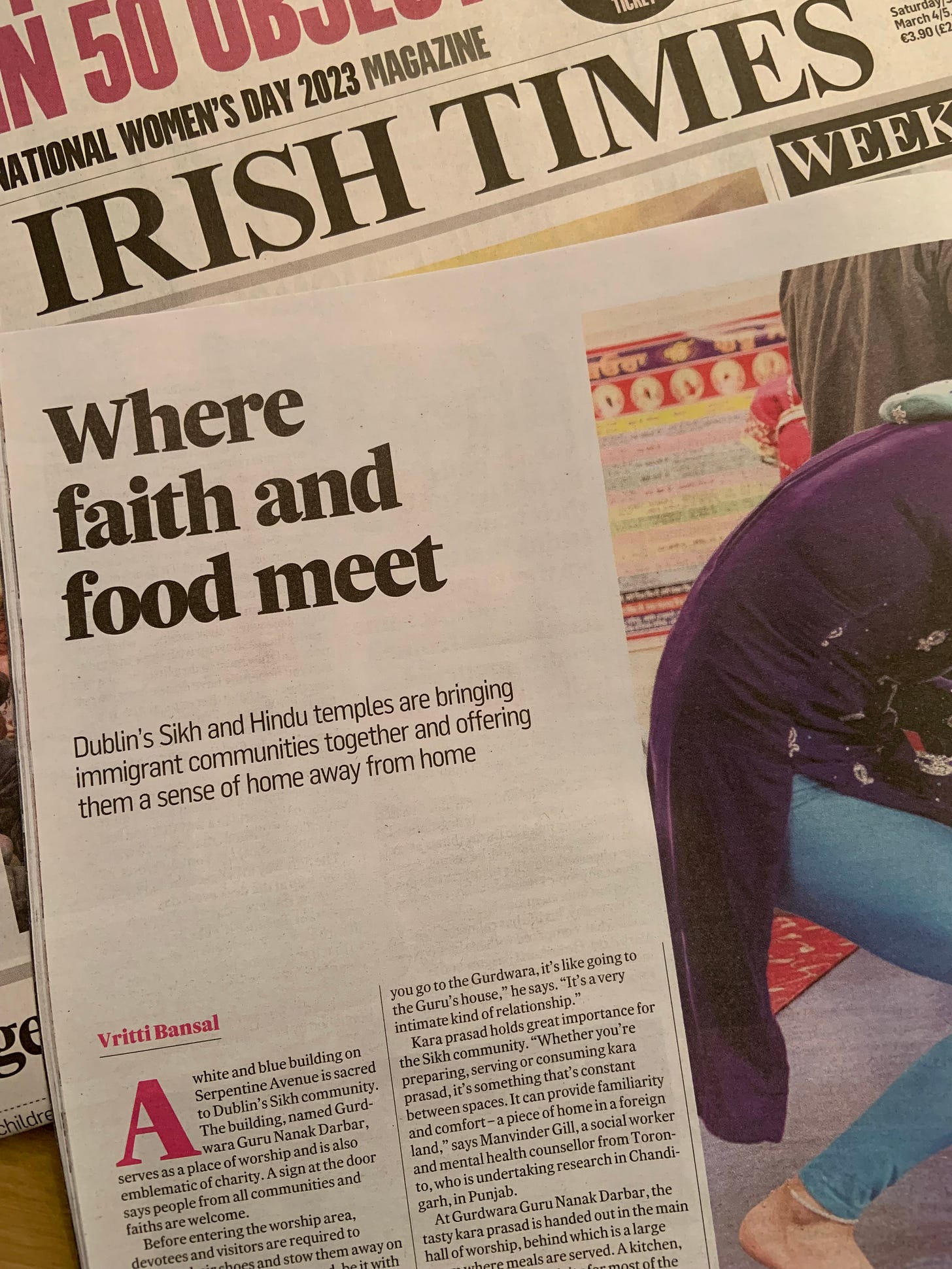

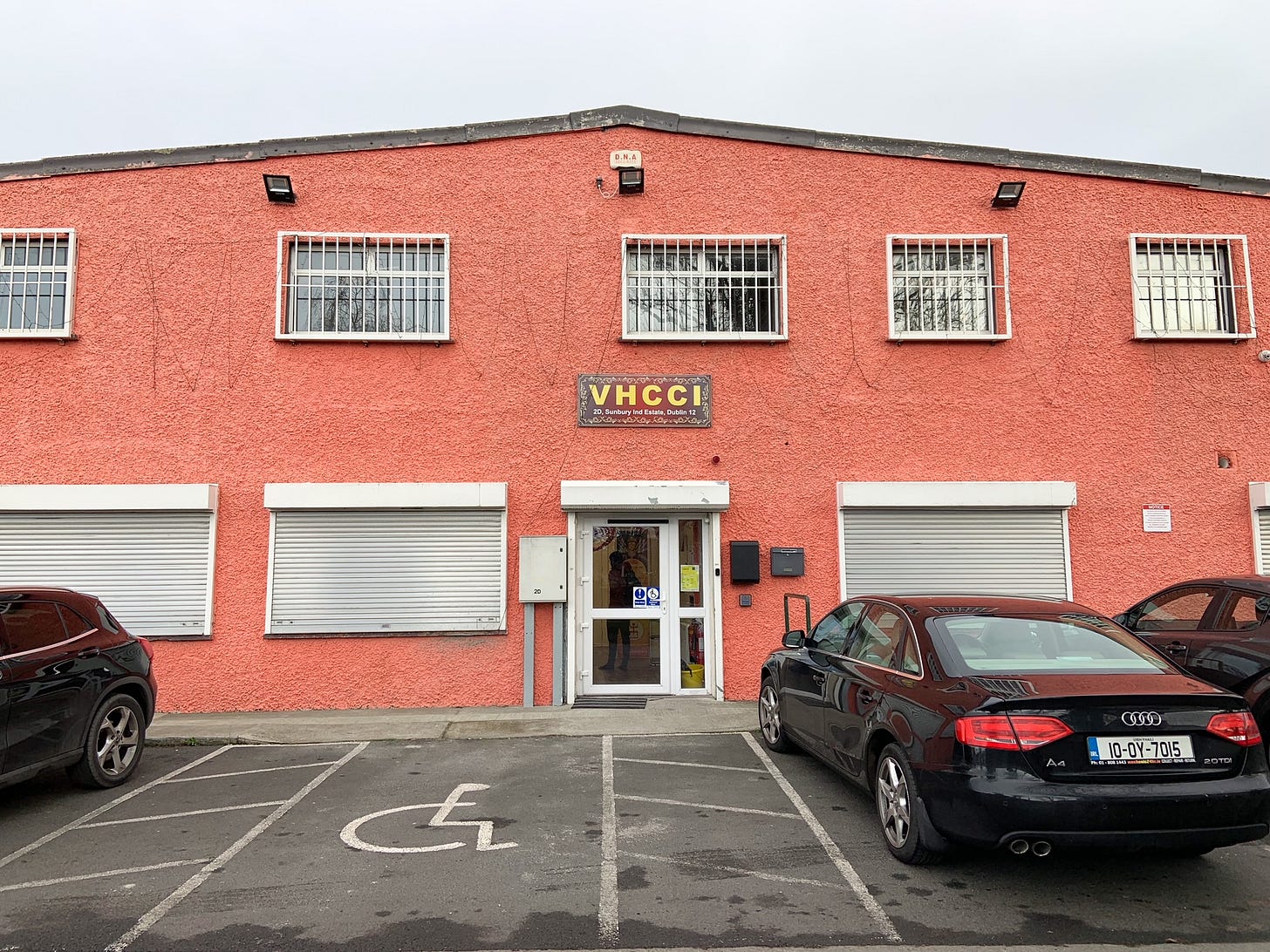
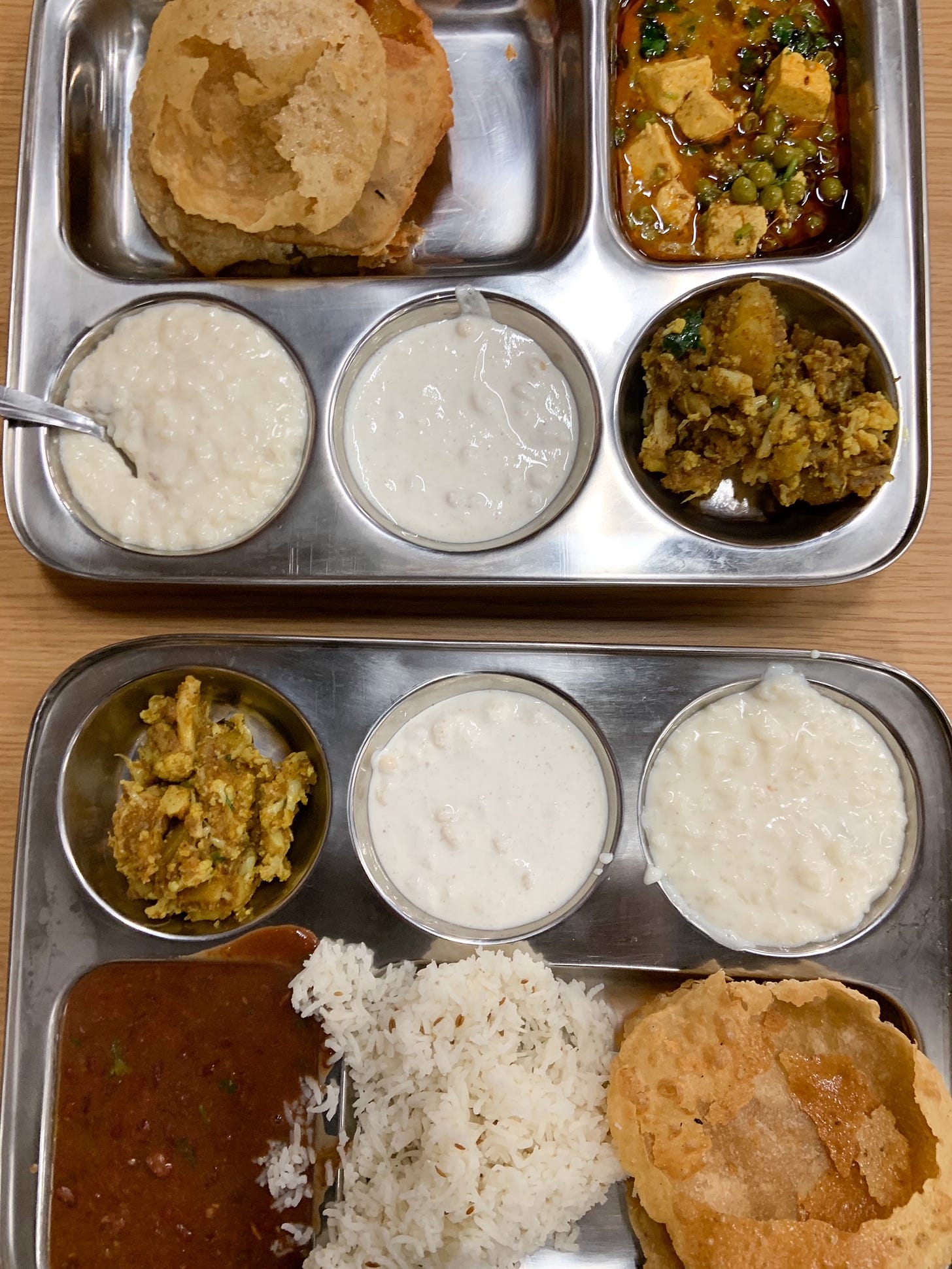
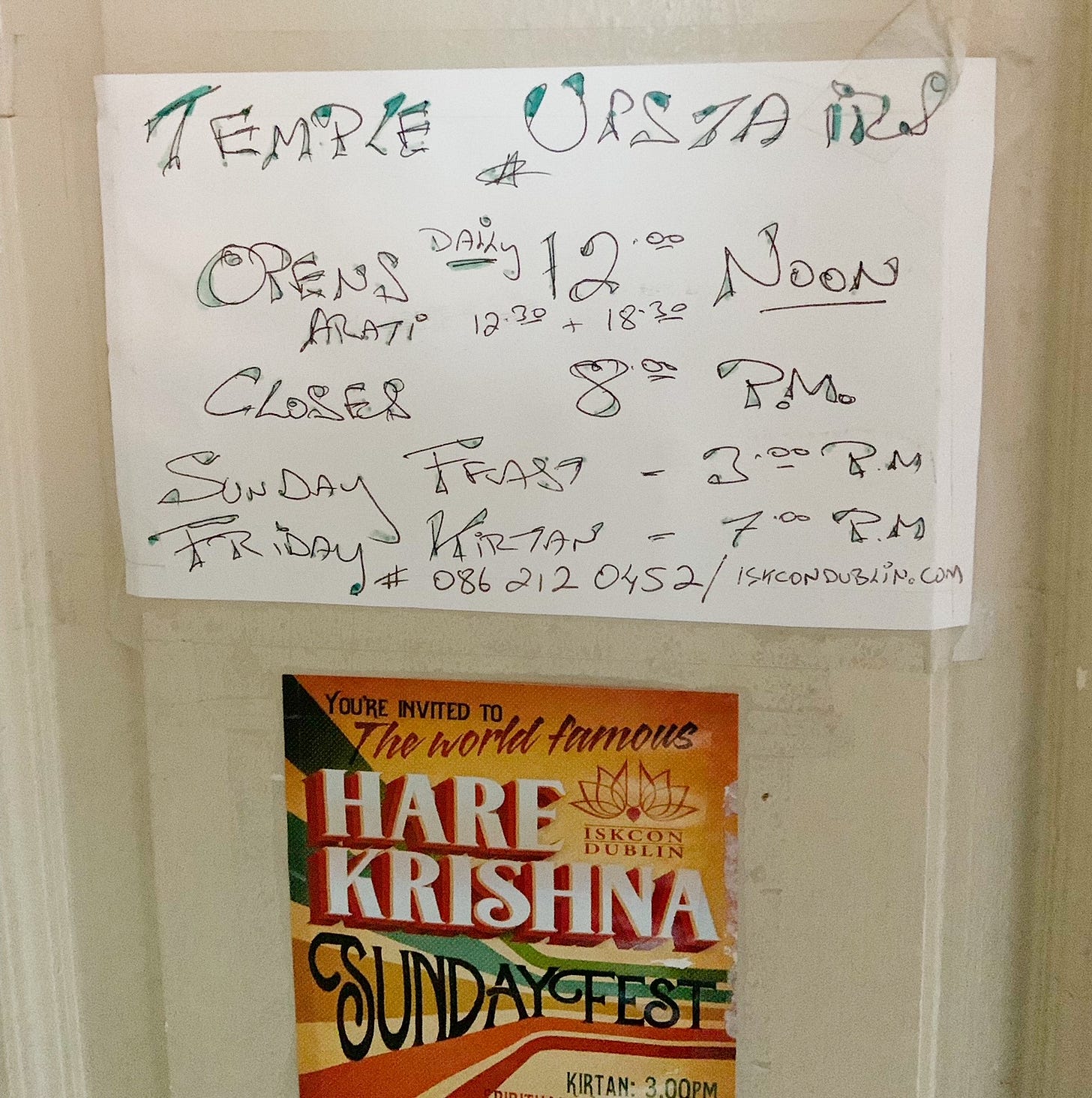
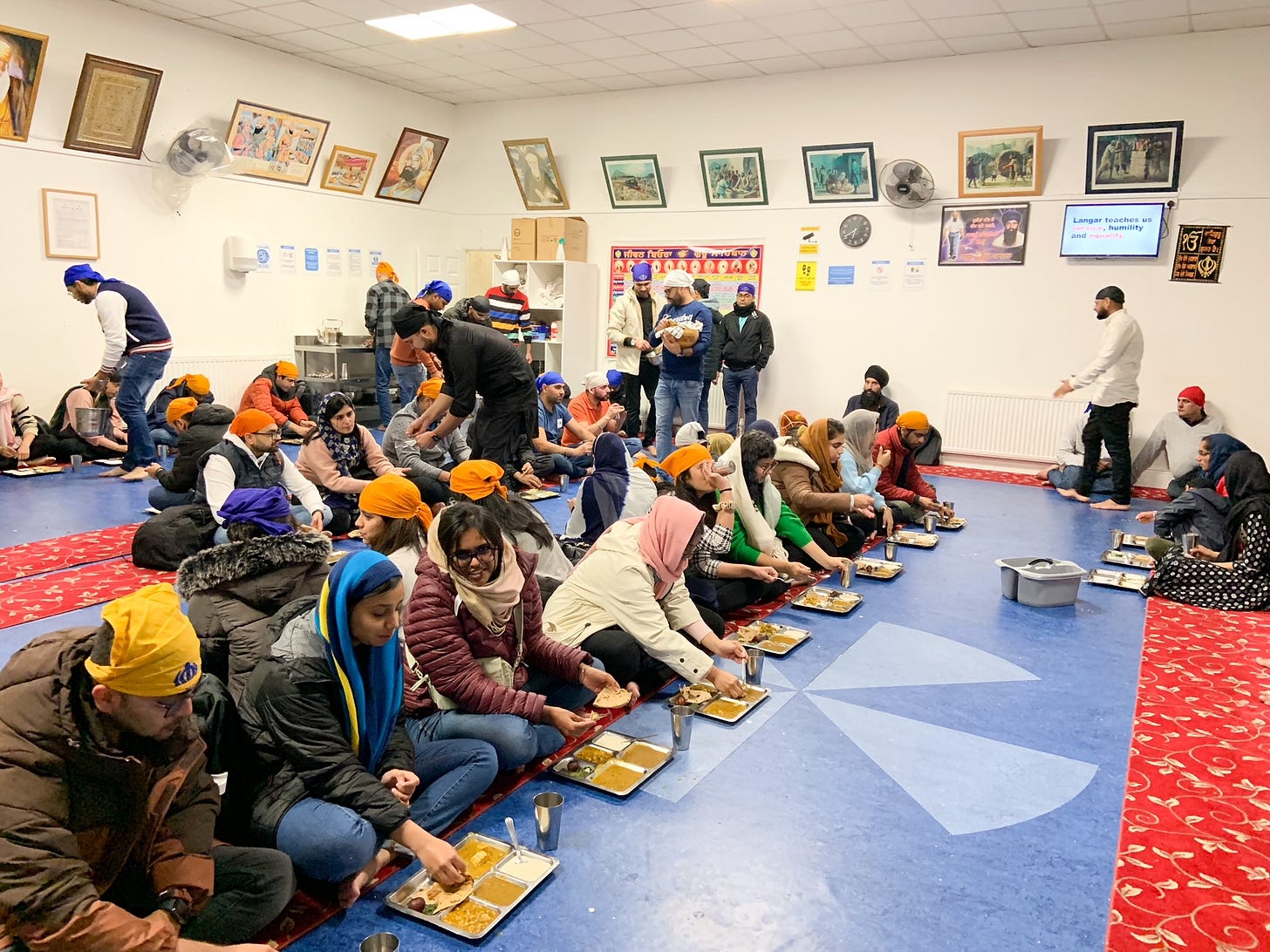
Well done Vritti👏👏. Thank you for sharing the hard work that went in to create the phenomenal piece that you created for Irish Times 👏👏. You are a star 🌟